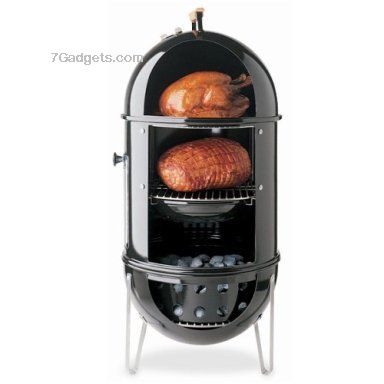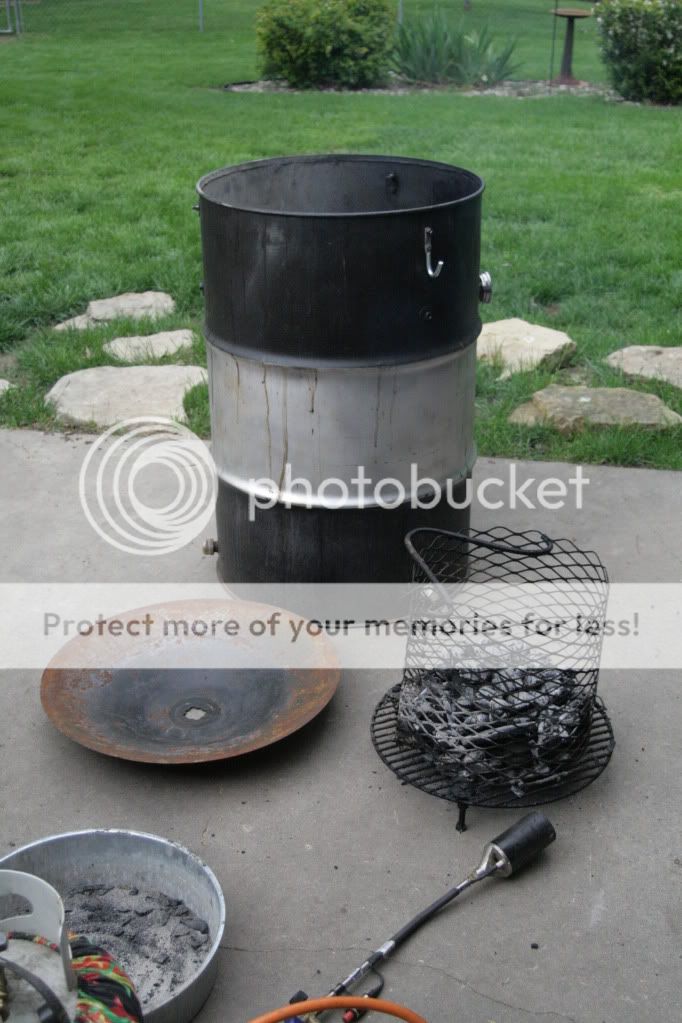Rodney
Full Fledged Farker
- Joined
- Dec 15, 2009
- Messages
- 350
- Reaction score
- 57
- Points
- 0
- Location
- Antelope, CA (Sacramento metro area)
Hey everyone-
I have an idea, but as I learned long ago, when you're a n00b at something, any ideas you have are rarely new ones... So, I suggest this with full expectations that someone is going to say "Yeah, tried it, it's a no-go."
One of the main issues with a UDS, as I see it, is that when you take the lid off the fire gets a rush of air. After the lid is replaced, the temp goes up, and takes some time to stabilize, even if you do block the intakes before removing the lid. Managing the temperature swings takes some getting used to, and I'm in the midst of that right now. Don't get me wrong, I'm going to learn how to use a standard UDS, but my struggles got me thinking...
What if there was a plate in the UDS that more or less divided the drum into a firebox and a cooking chamber? It'd sit on bolts above the charcoal basket and closely fit against the wall of the drum, sealing the chamber below it off from the cooking chamber with the exception of some deliberately placed holes (or specifically sized gap around the perimeter of the plate) with an open area roughly equivalent to a 2" bung hole. The effect *should* be that the fire has a well-defined inlet and outlet, just like when the lid is on a standard UDS, but might have almost no reaction to the lid being removed from the cooking chamber. I recognize that this is exactly the way horizontal/offset smokers work. The plate could be lined with foil to act as a drip pan as well, which would make cleanup easier, especially if it was built with a rim around it.
Of course, a cheaper variant of this to try first would be a 22.5" grate covered with foil, with rolled up foil stuffed along the sides except for ~4 1" wide spots.
I tossed together some images of what I'm talking about...
Thanks for any feedback!
-Rodney


I have an idea, but as I learned long ago, when you're a n00b at something, any ideas you have are rarely new ones... So, I suggest this with full expectations that someone is going to say "Yeah, tried it, it's a no-go."
One of the main issues with a UDS, as I see it, is that when you take the lid off the fire gets a rush of air. After the lid is replaced, the temp goes up, and takes some time to stabilize, even if you do block the intakes before removing the lid. Managing the temperature swings takes some getting used to, and I'm in the midst of that right now. Don't get me wrong, I'm going to learn how to use a standard UDS, but my struggles got me thinking...
What if there was a plate in the UDS that more or less divided the drum into a firebox and a cooking chamber? It'd sit on bolts above the charcoal basket and closely fit against the wall of the drum, sealing the chamber below it off from the cooking chamber with the exception of some deliberately placed holes (or specifically sized gap around the perimeter of the plate) with an open area roughly equivalent to a 2" bung hole. The effect *should* be that the fire has a well-defined inlet and outlet, just like when the lid is on a standard UDS, but might have almost no reaction to the lid being removed from the cooking chamber. I recognize that this is exactly the way horizontal/offset smokers work. The plate could be lined with foil to act as a drip pan as well, which would make cleanup easier, especially if it was built with a rim around it.
Of course, a cheaper variant of this to try first would be a 22.5" grate covered with foil, with rolled up foil stuffed along the sides except for ~4 1" wide spots.
I tossed together some images of what I'm talking about...
Thanks for any feedback!
-Rodney




